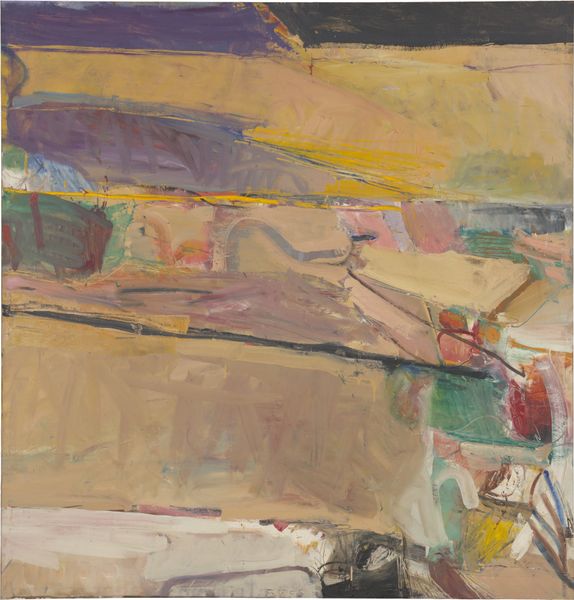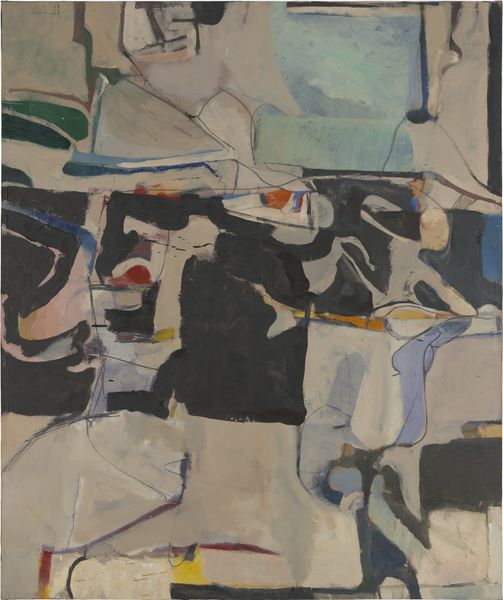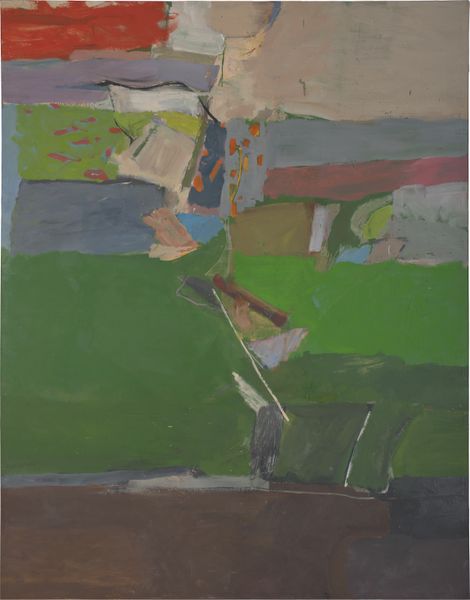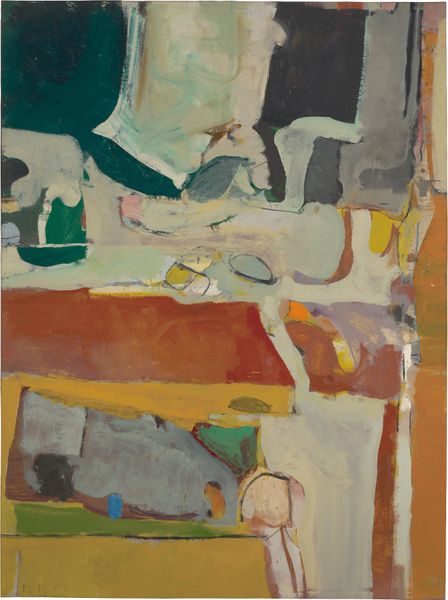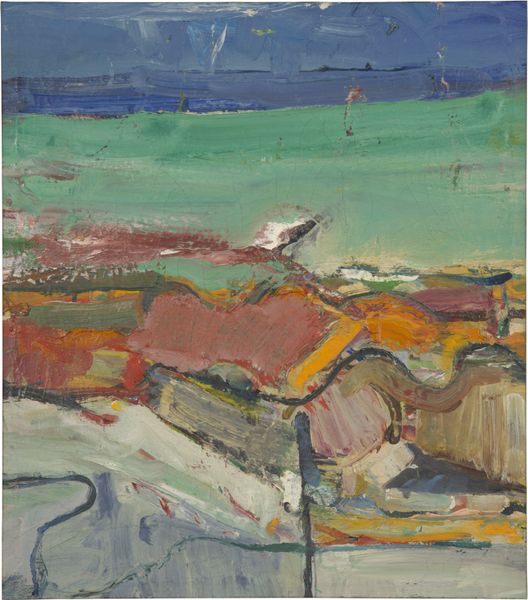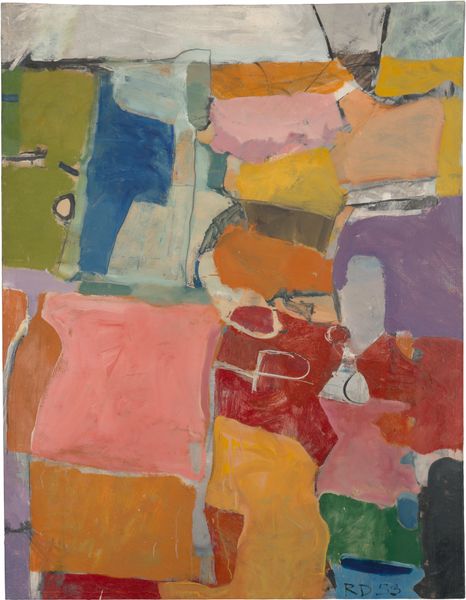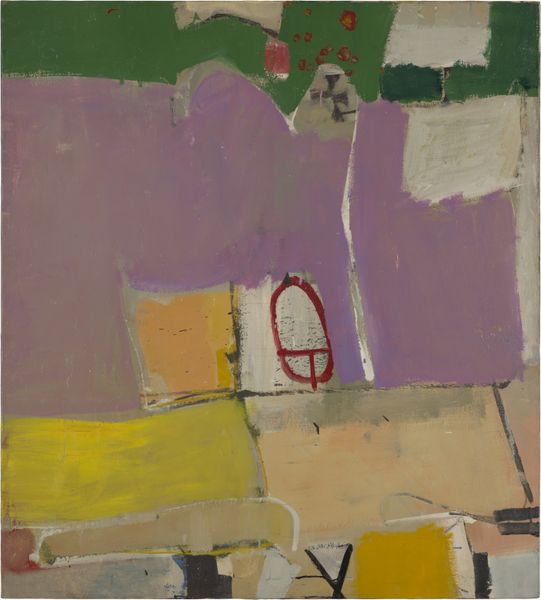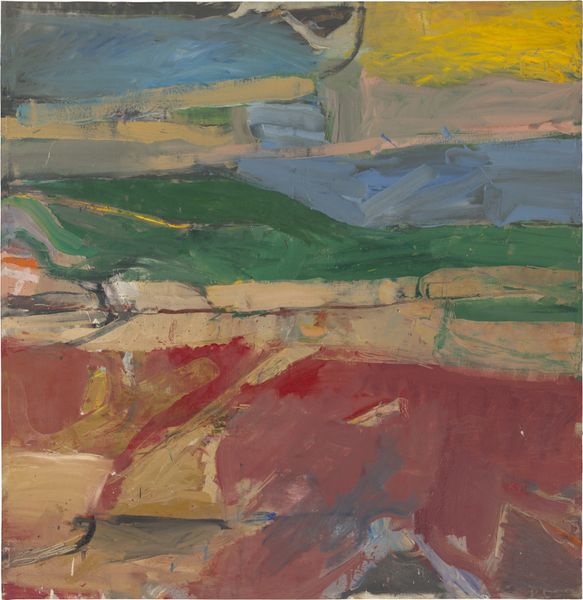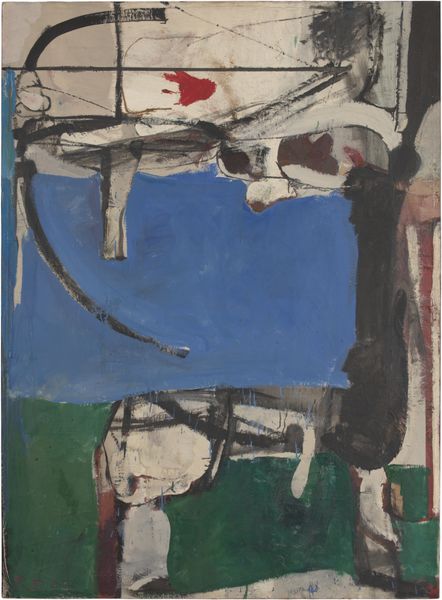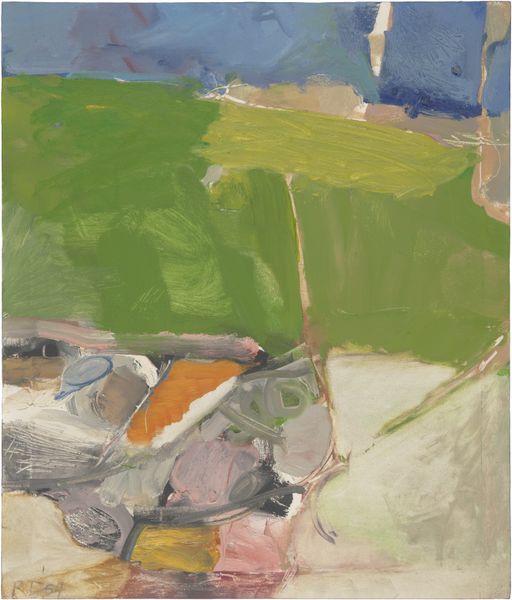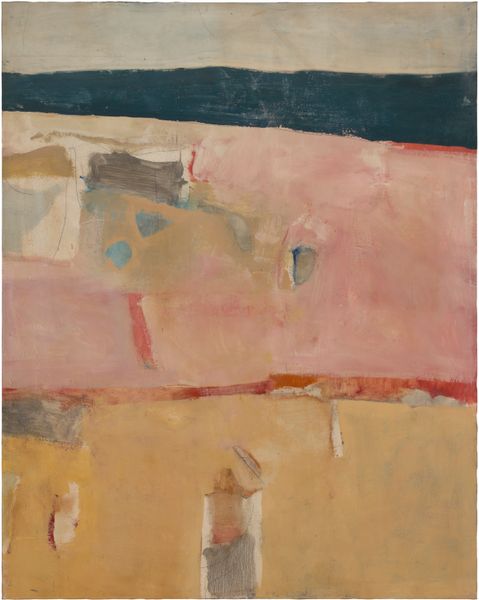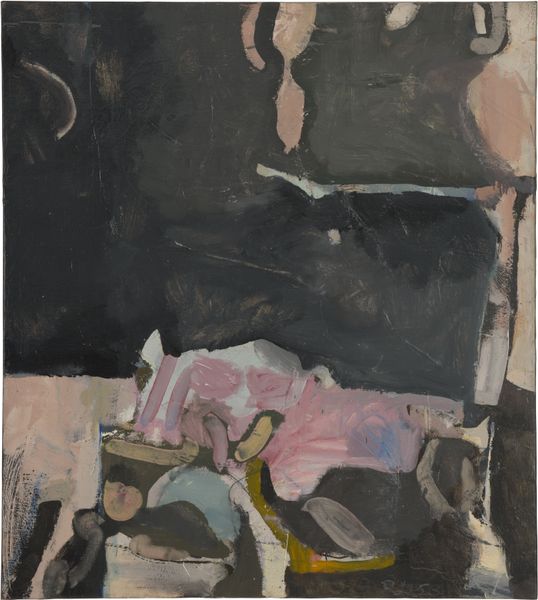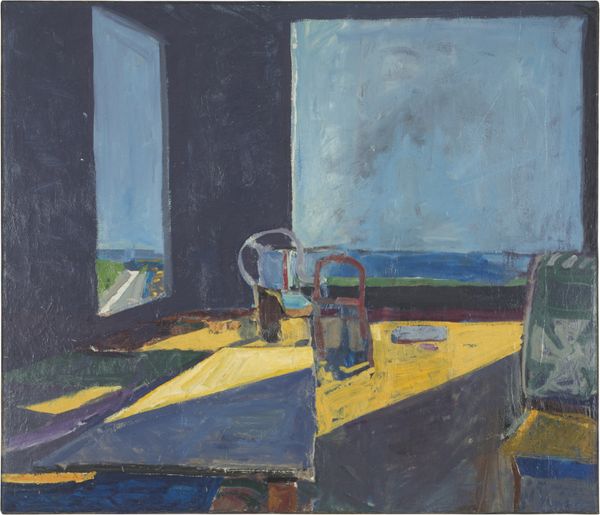
painting, oil-paint, acrylic-paint
#
abstract-expressionism
#
abstract painting
#
painting
#
oil-paint
#
landscape
#
acrylic-paint
#
oil painting
#
bay-area-figurative-movement
#
acrylic on canvas
#
geometric-abstraction
#
modernism
Dimensions: 162.6 x 149.2 cm
Copyright: Richard Diebenkorn Foundation
Curator: Today we're looking at "Berkeley #58," an oil and acrylic work on canvas created by Richard Diebenkorn in 1955. Editor: My first impression is… complex. There's a kind of somber beauty, despite the rather chaotic composition. It’s a moody puzzle of shapes and colors. Curator: Diebenkorn, during his Berkeley period, was deeply invested in the formal language of Abstract Expressionism, yet he retained a sense of landscape, which is fascinating. Notice how the composition is structured through broad, geometric forms and carefully considered planes. Editor: I see it now – that horizon line! There's definitely an echo of landscape here. And those blues… particularly that square at the top left…they seem almost like memories of sky and water fighting their way through abstraction. Curator: Precisely. That tension is key. He uses the interplay of those large, mostly monochromatic areas—greens and grays—against smaller, more vibrant pops of color to create a dynamic visual experience. The textures, achieved through layering paint, add to the depth and complexity. It begs the question: what part of the visible world do these signs intend? Editor: I can't help but read deeper. Those circle shapes in the lower-right. I feel a connection with other artists who have evoked childlike imagery in painting, from Miró to Guston. They suggest something playful, perhaps even vulnerable, beneath the surface. The shapes feel intentionally primitive, evocative. Curator: An interesting interpretation! Though, through a formal lens, I’d say those shapes act more as structural counterpoints. They interrupt the otherwise rigid geometry of the canvas and prevent it from becoming too static. Editor: But couldn’t it be both? Symbol and structure informing each other? After all, an artist’s symbols don't exist in a vacuum; they carry collective meanings, cultural baggage if you will, and those contribute to the painting’s overall structure, as well as our perception of the work. Curator: Fair enough. It's that very ambiguity, that openness to interpretation, which gives Diebenkorn's work its lasting power. Editor: Indeed. And by acknowledging the weight that simple, playful shapes can have, we understand the emotional intelligence imbued within Diebenkorn's painting.
Comments
No comments
Be the first to comment and join the conversation on the ultimate creative platform.
